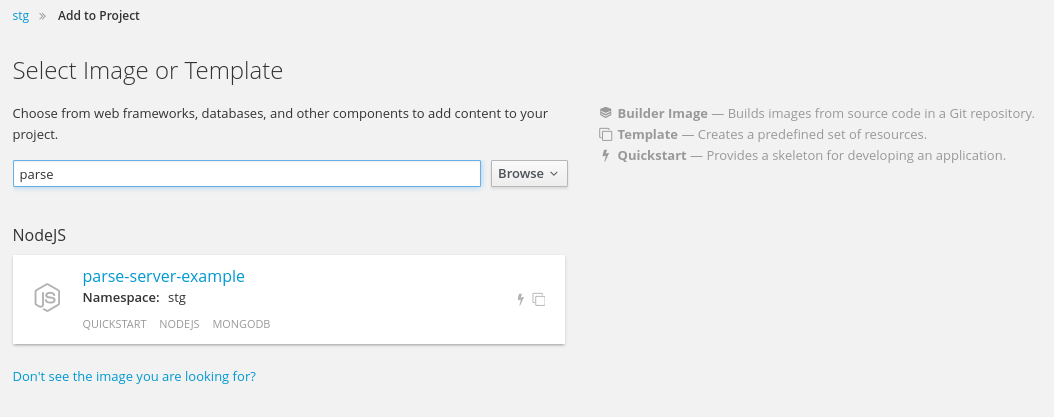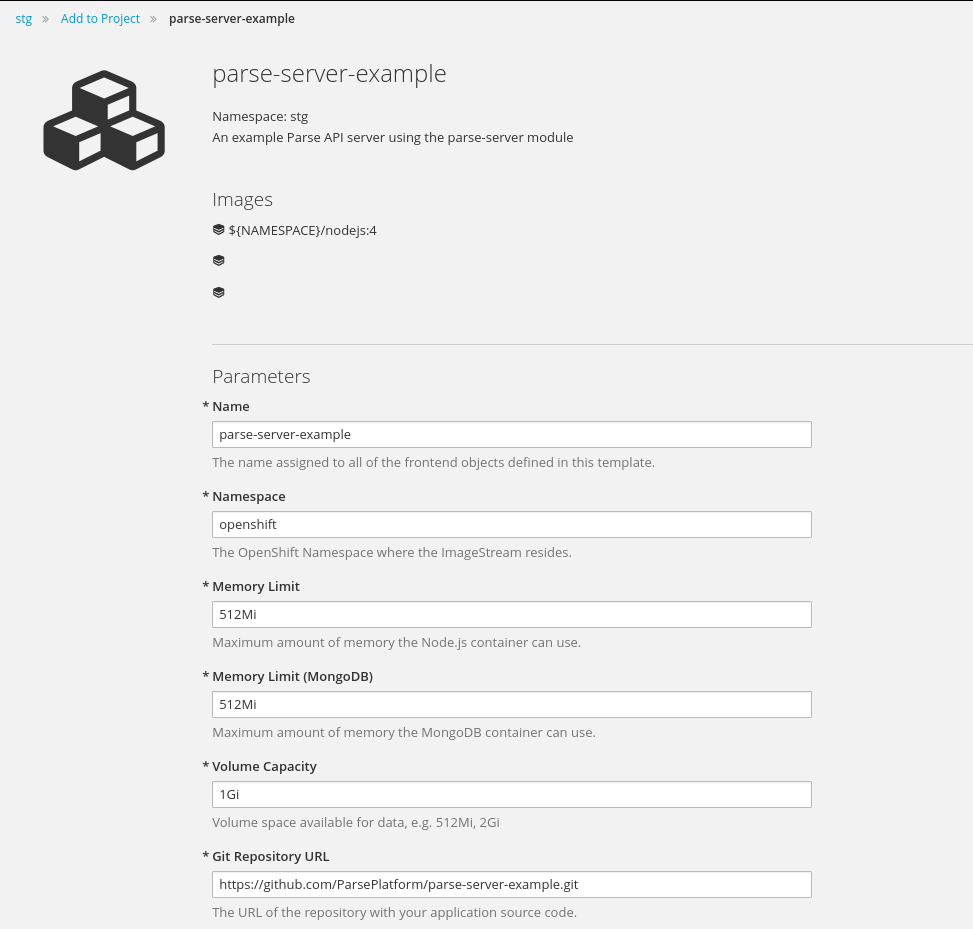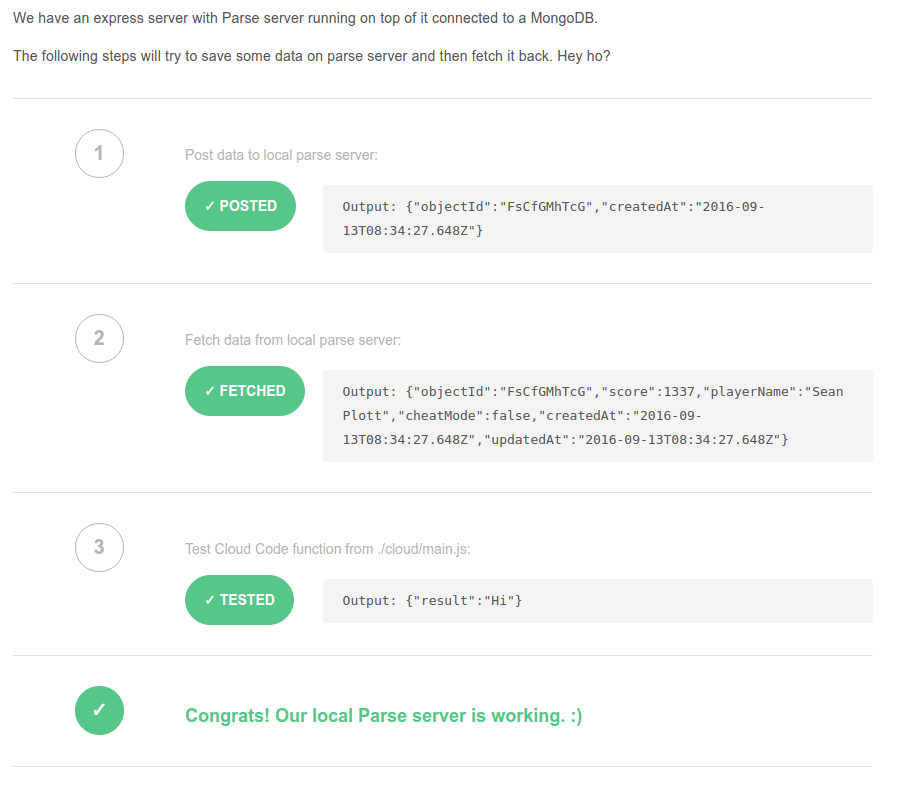A few months have passed since the retirement announcement of Parse dedicated service. If you are unfamiliar with Parse, it was a Mobile Backend as a Service which allowed you to run your backend API seamlessly and hosted in the cloud. The good news is that the replacement open source version, Parse Server, is becoming increasingly popular. Parse Server can be self-hosted on an infrastructure running Node.js and is powered by the Express web application framework.
Today, I am happy to announce the availability of a Parse Server quickstart for OpenShift Online (Next Gen). Follow along and you'll be hosting your Parse Server instance in less than 5 minutes!
Getting Started With OpenShift Online (Next Gen)
If you still don't have an account on OpenShift Online (Next Gen), then follow these easy steps:
- Register for a free OpenShift Online (Next Gen) account
- Create a project in the OpenShift Online Console.
- Install the OpenShift CLI.
Creating a Parse Server Project
To create a Parse Server project on your account, firstly add the Parse Server default template to your project:
$ oc create -f https://raw.githubusercontent.com/ParsePlatform/parse-server-example/master/openshift.json
Then, deploy Parse Server from the web console just like you would with any other app:
- Open your project in the OpenShift Online Console
- Click Add to Project from the top navigation
- Scroll down (or search) and select NodeJS > Parse Server

-
(Optionally) Update the Parse Server settings (parameters), such as git repository URL

-
Click Create
And that's it, after your application is built and deployed you should be able to test under a default /test route!
If you'd like to find out more about about Parse Server, be sure to check the official GitHub repository and the Parse Platform Documentation.
Note: If you are a shell fan, you can simply create a new Parse Server project by specifying the template file directly:
$ oc new-app -f https://raw.githubusercontent.com/ParsePlatform/parse-server-example/master/openshift.json
If you are looking for an enterprise solution which runs natively on OpenShift (Next Gen), go ahead and try Red Hat Mobile Application Platform.
À propos de l'auteur
Parcourir par canal
Automatisation
Les dernières nouveautés en matière d'automatisation informatique pour les technologies, les équipes et les environnements
Intelligence artificielle
Actualité sur les plateformes qui permettent aux clients d'exécuter des charges de travail d'IA sur tout type d'environnement
Cloud hybride ouvert
Découvrez comment créer un avenir flexible grâce au cloud hybride
Sécurité
Les dernières actualités sur la façon dont nous réduisons les risques dans tous les environnements et technologies
Edge computing
Actualité sur les plateformes qui simplifient les opérations en périphérie
Infrastructure
Les dernières nouveautés sur la plateforme Linux d'entreprise leader au monde
Applications
À l’intérieur de nos solutions aux défis d’application les plus difficiles
Programmes originaux
Histoires passionnantes de créateurs et de leaders de technologies d'entreprise
Produits
- Red Hat Enterprise Linux
- Red Hat OpenShift
- Red Hat Ansible Automation Platform
- Services cloud
- Voir tous les produits
Outils
- Formation et certification
- Mon compte
- Assistance client
- Ressources développeurs
- Rechercher un partenaire
- Red Hat Ecosystem Catalog
- Calculateur de valeur Red Hat
- Documentation
Essayer, acheter et vendre
Communication
- Contacter le service commercial
- Contactez notre service clientèle
- Contacter le service de formation
- Réseaux sociaux
À propos de Red Hat
Premier éditeur mondial de solutions Open Source pour les entreprises, nous fournissons des technologies Linux, cloud, de conteneurs et Kubernetes. Nous proposons des solutions stables qui aident les entreprises à jongler avec les divers environnements et plateformes, du cœur du datacenter à la périphérie du réseau.
Sélectionner une langue
Red Hat legal and privacy links
- À propos de Red Hat
- Carrières
- Événements
- Bureaux
- Contacter Red Hat
- Lire le blog Red Hat
- Diversité, équité et inclusion
- Cool Stuff Store
- Red Hat Summit


